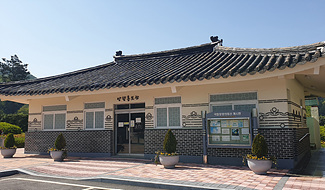Mang-Hyang Cemetery
General Info
| Total | 350,906 square meters | Graveyard | 51,483 square meters |
|---|---|---|---|
| Forest in the rear | 235,936 square meters | Others | 63,487 square meters |
Major Facilities

This is an office for staff who manage the National Mang-Hyang Cemetery.

This area is for the family to rest before and after the funeral of their loved one. Vases, mats and utensils used in ancestral rites necessary for a visit to one’s ancestral graves are kept here and provided. This building was completed in 1996.

This educational space was established in 2013 to provide the details and process of establishing the Mang-Hyang Cemetery for domestic Koreans and foreigners. It reminds descendants who visit Mang-Hyang Cemetery of the agony and lessons from the loss of national sovereignty, including the tragedy of forced labor during the Japanese occupation and the history of Koreans emigrating to faraway lands.

Kwijeong Hall, a 117㎡ building built in 1976, offers spaces for ritual ceremonies for Christians, Buddhists and Confucianists. These religious ceremonies are held according to the wishes of the bereaved. The name Kwijeong means people inevitably come to their beloved homeland at the end of their lives, as everybody goes back home after the sun goes down (“kwi” means to return and “jeong” means affection).

Standing 15.5 meters high with 23-meter-wide wings, the Memorial was constructed with a main body having a simple and indigenous style, indicating the pride of overseas Koreans. A brightly shining sun in the upper part of the tower lights Koreans’ road to unlimited progress and luck. On the main body of the tower, the name Mang-Hyang Cemetery is embossed in the late former President Park Chung-hee’s handwriting. The tower wings are engraved with a triad of images. A 3.5-m figure of a flying heavenly maid symbolizing ascension to heaven graces the middle, while an image of a woman in a foreign land longing for her homeland is on the left, and a symbol of patriotism indicating the love for the nation and the people is on the right. In the center is an altar stone and in front an incense altar. This memorial tower was built with funds donated by the Republic of Korean Residents Union in Japan in 1976.
Dedicated poem
Here, the land of mother country
the land that you longed for even in your dreams
The Mang-Hyang hill
that was waiting for your return
The Mang-Hyang hill
where azaleas bloom in the spring
wild chrysanthemums bloom in the autumn
the place the sun and the moon take turns to guard
Now after the years of hardship
return and sleep in this hill of rest
in the arms of your homeland
[Written by Lee Eun-sang, August 15, 1976]

As a resting place for the souls of those who died in foreign lands, this cemetery, completed in 1976, is designed in the shape of a baby in its mother's womb to symbolize a mother's undying love for her child.

This 26.9-meter-high and 36-meter-wide Memorial Tower was completed in 1984 as the eternal repose of the 269 passengers aboard the Korean Air passenger plane shot down by a Soviet fighter jet over Sakhalin on September 1, 1983. Sixteen figures condemn the attack on the left and sixteen female figures on the right symbolize the grief of families and humankind who suffered loss from the crime. This tower is maintained by Korean Air, and bereaved family members hold a memorial service here every year on September 1st.

This monument, established in 2018, expresses the wish for eternal rest and peace for the sexual slavery victims (also called: Comfort Women) who suffered unfathomable hardships at the hands of the Japanese military.
 이 누리집은 대한민국 공식 전자정부 누리집입니다.
이 누리집은 대한민국 공식 전자정부 누리집입니다.